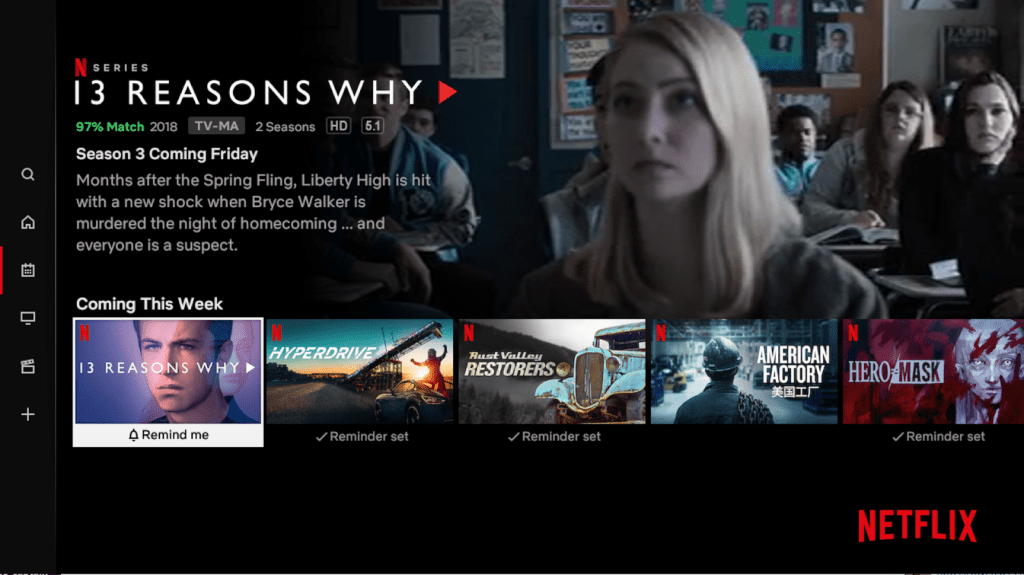Let’s walk through a seven-step content creation process to reach your target audience and build a loyal following. You will not only learn how to build a startup content marketing strategy, but also find real-life examples of how other businesses achieve growth by creating and distributing various types of content.
As a startup owner, you know the importance of marketing your brand to gain traction in the market. But with limited resources and a tight budget, it can be challenging to create an effective marketing strategy to grow your business.
What is content marketing?
Before we dive into creating a startup content marketing strategy for your business, let’s first define what content marketing is.
Content marketing is a strategic marketing approach that focuses on creating and distributing valuable, relevant and consistent content to attract and retain a clearly defined audience — and ultimately, to drive profitable customer action. The goal of developing a startup content marketing strategy is to build trust with your audience by providing them with valuable information that helps them solve their problems or achieve their goals.
Startup content marketing strategy is not designed to convert leads for your startup immediately. It is a sustainable marketing method to help your business generate better leads, more conversions and more sales in the long run.
Where’s the best place to start with content marketing?
If you’re just getting started with content marketing, it can be overwhelming to know where to begin.
I recommend starting with what you are comfortable with creating. If you are good at writing, start with a blog. If you take great pictures and/or not camera shy, then social media can be a good startup content marketing strategy that you can try.
It takes time to build a loyal fan base. If you force yourself into creating a type of content that you are unfamiliar with, the stress of learning it from scratch may lead you into quitting before you gain enough traction to win the game.
7 steps of building a startup content marketing strategy
Now that you understand what content marketing is, let’s discuss how to create an effective content marketing strategy for your startup:
Step 1: Define your target audience
The first step in creating a startup content marketing strategy is to define your target audience. Who are you trying to reach? What are their pain points, interests, and needs?
By understanding your target audience, you can create content that resonates with them and ultimately drives them to take action.
Step 2: Set your goals
Once you have defined your target audience, the next step of your startup content marketing strategy is to set your goals. What do you want to achieve with your content marketing efforts? Do you want to increase brand awareness, generate leads, or drive sales?
By setting clear goals, you can measure the success of your strategy and make adjustments as needed.
Step 3: Conduct a content audit
Before creating new content, it is essential to conduct a content audit to understand what content you already have and what’s missing. This will help you identify gaps in your content and ensure that what you create aligns with your goals and resonates with your target audience.
Step 4: Develop your content strategy
After conducting a content audit, it’s time to develop your startup content marketing strategy. This includes determining the types of content you’ll create, the channels you’ll use to distribute your content, and the frequency of your content creation and distribution.
Step 5: Create your content
Once you have a content strategy in place, you need to start put together your content. Be it blog posts, videos, infographics, podcasts or something else, remember to create content that provides value to your target audience and aligns with your goals and brand voice.
Step 6: Distribute your content
After creating your content, it’s time to distribute it to your target audience. Make sure to distribute your content consistently and on the channels where your target audience is most active, be it social media, email marketing, guest posting, and wherever they congregate based on your research.
Step 7: Measure your results
Finally, it’s crucial to measure the success of your content marketing efforts. This includes tracking metrics such as website traffic, social media engagement, lead generation, and sales.
By measuring your results, you can identify what is working and what is not and adjust your strategy accordingly.
When should you update your startup content marketing strategy?
To ensure that it’s still aligned with your business goals and resonating with your target audience, it is essential to update your startup content marketing strategy regularly.
I recommend reviewing it at least once a year, or whenever there is a significant change in your business or industry.
Examples of creative content marketing strategy
As a startup, you may not have a large budget for content marketing, but that doesn’t mean you can’t get creative with your content marketing efforts. Here are a few ideas:
1. Collaborations
Through collaborations, you can reach a wider audience, increase credibility and create unique content that stands out from the competition.
Partner with other businesses or influencers to create content together. You can co-create blog posts, videos or social media posts that align with your brand values and target audience.
Collaboration examples
Spotify and Hulu teamed up to offer a bundled subscription service for students. The bundle offers access to both Spotify Premium and Hulu’s ad-supported plan at a discounted price. This collaboration helped both brands reach a wider audience and provide unique value to their customers.
Coca-Cola and McDonald’s have been collaborating for years, with Coca-Cola providing its beverages for McDonald’s restaurants worldwide. This partnership has helped both companies increase their sales and brand awareness.

2. Events
You can build relationships with your audience, generate leads and create buzz around your brand by hosting virtual or in-person events that aligns with your brand. Workshops, webinars, conferences and networking events that address your audience’s pain points or interests are some of the event ideas you can consider.
Don’t forget to promote your event through your website, social media and email marketing channels to get more people to show up.
Event examples
The South by Southwest (SXSW) Conference is an annual event that brings together professionals from the music, film and tech industries. This event provides a platform for startups to showcase their products, network with industry leaders, and gain exposure.
Salesforce organizes the annual Dreamforce conference, which brings together thousands of industry professionals to learn about the latest trends in technology and business. This event provides value to Salesforce’s target audience and helps them build relationships with their customers and partners.

3. Influencer marketing
You can increase your reach, build trust with your audience, and drive traffic and sales to your website by partnering with influencers.
Influencer marketing can be an effective startup content marketing strategy to reach a wider audience and build credibility for your brand. As a startup with limited resources, you can consider partnering with micro- or nano-influencers in your industry who have a loyal following to promote your brand authentically.
Influencer marketing examples
Chipotle partnered with TikTok influencer David Dobrik to launch a challenge where users can create their own unique burrito order. This campaign helped Chipotle reach a younger audience and generate buzz around their brand.
Gymshark collaborated with fitness influencer Whitney Simmons to promote their workout apparel. Whitney’s loyal following and authentic promotion helped Gymshark increase their brand awareness and drive sales.
4. Interactive content
Through interactive content, you can gather valuable insights about your audience, increase engagement and drive traffic to your website.
Interactive content is a great way to provide your target audience with a memorable experience to boost engagement. You can create interactive quizzes, polls, surveys, or calculators that align with your brand and provide value to your target audience.
Interactive content examples
HubSpot created the Website Grader tool, which analyzes a website’s performance and provides personalized recommendations for improvement. This interactive tool helped HubSpot generate leads and increase engagement with their target audience.
The New York Times publishes news quizzes to test how well their readers stack up with other Times readers. This interactive content helps the news publication increase engagement and drive traffic to their website.

5. Personalization
Personalization is becoming increasingly important in content marketing as customers expect a more tailored experience. Do it well and you will be able to increase engagement, loyalty and conversions.
You can use data and analytics to personalize your content based on your audience’s interests, preferences and behaviors. You can also personalize your email marketing campaigns, landing pages or social media ads to provide a more personalized experience to your audience.
Personalization example
Amazon personalizes its homepage for each user based on their browsing and purchase history. It helps Amazon increase sales and customer loyalty.
Netflix uses data and analytics to personalize its recommendations for each user based on their viewing history and preferences. This personalized experience helps Netflix increase customer retention and satisfaction.

6. Storytelling
Using stories to showcase your brand’s human side is a powerful way to connect with your audience and build an emotional connection with your brand.
You can share stories about your brand’s mission, values or challenges you have overcome, or feature stories from your customers or employees to stand out from the competition, build trust with your audience and create a lasting impression.
Storytelling examples
Airbnb features stories from their hosts and guests, showcasing the human side of their brand and creating a sense of community. This storytelling helps Airbnb differentiate itself from its competitors and build an emotional connection with its audience.
Patagonia shares stories about their sustainability efforts and environmental activism, which align with their brand values and resonate with their audience. This storytelling helps Patagonia build trust and loyalty with their customers.

7. User-Generated Content
User-generated content is a great startup content marketing strategy you can use to increase engagement, build trust with your audience and create a sense of community around your brand.
You can run a contest or challenge and ask your audience to submit photos, videos or testimonials, then feature the best user-generated content on your website, social media channels or email newsletters as social proofs.
User-generated content examples
GoPro encourages its users to share their action-packed videos on social media using the #GoPro hashtag. This user-generated content helps GoPro showcase the capabilities of their product and increase brand awareness.
Starbucks runs the #RedCupContest, where customers can share photos of their holiday-themed Starbucks cups on social media. This user-generated content helps Starbucks increase engagement and create a sense of community around their brand.

Key takeaways
Creating a startup content marketing strategy may sound challenging, but it’s essential if you want to extend reach to more of your target audience and drive profitable customer action in the long run.
By following the steps outlined in this post, you can start building an effective content marketing strategy to nurture your audience for a sustainable growth. To ensure that you’re getting the most out of your content marketing efforts, don’t forget to measure your results regularly and adjust your strategy as needed.
Still got questions? I am happy to help! Let’s have a chat!



